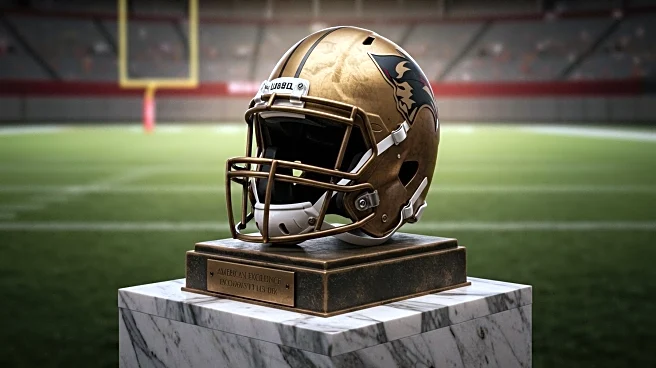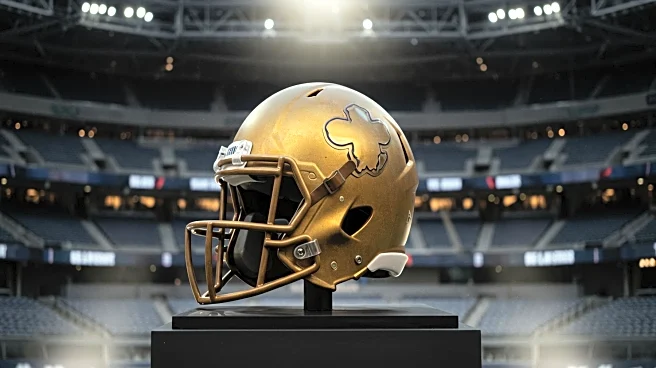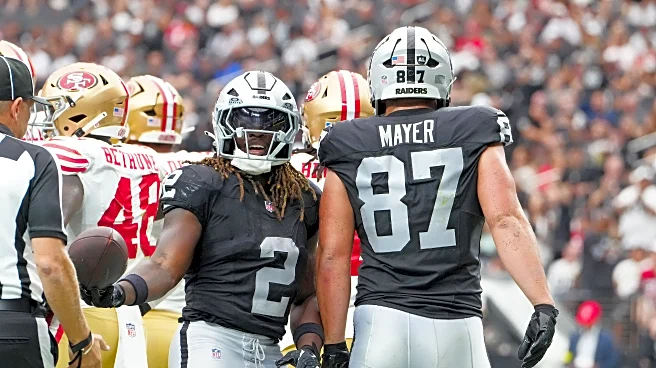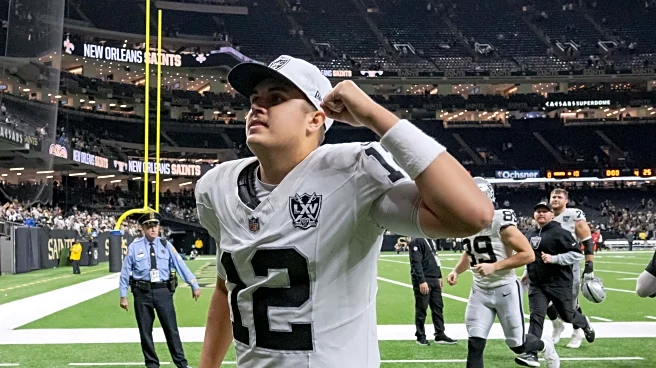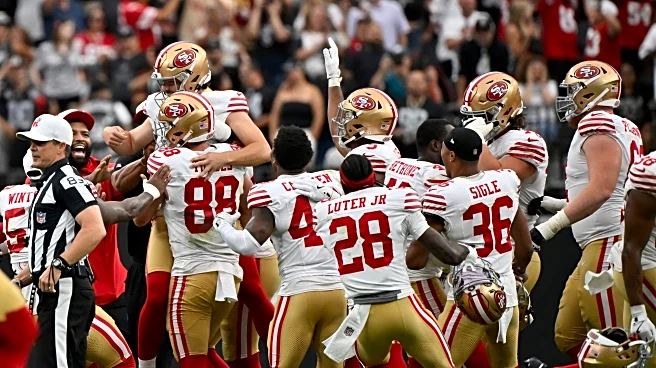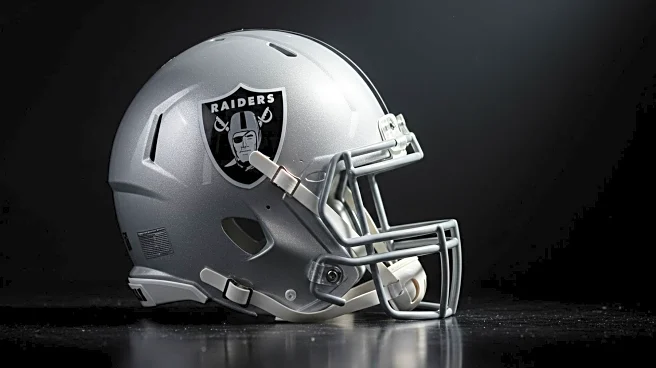What's Happening?
The New England Patriots have unveiled a 12ft bronze statue of NFL legend Tom Brady outside their stadium in Massachusetts. Brady, who led the Patriots to six Super Bowl victories, expressed feelings of gratitude and nostalgia during the ceremony. The statue, featuring Brady with one arm raised in triumph, is mounted on a six-sided base symbolizing the six championships he won with the team. Including the base, the entire structure stands 17ft tall, representing the 17 AFC East division titles Brady secured as a starting quarterback. Brady, who retired after a 23-season career, was initially drafted as the 199th pick in 2000 and played his final season with the Tampa Bay Buccaneers, winning a seventh Super Bowl title.
Why It's Important?
The unveiling of Tom Brady's statue is a significant tribute to his impact on the Patriots and the NFL. Brady's career achievements have set new standards in the sport, making him a role model for aspiring athletes. His journey from a late draft pick to a record-breaking quarterback underscores the importance of perseverance and dedication. The statue serves as a lasting symbol of Brady's contributions to the Patriots, reinforcing his status as a key figure in the franchise's history. It also highlights the cultural and economic influence of sports icons, as Brady continues to engage in business ventures post-retirement, including ownership stakes in sports teams.
What's Next?
The statue's unveiling precedes the Patriots' opening pre-season game, indicating a continued celebration of Brady's legacy within the team. As Brady transitions into his post-playing career, his involvement in sports ownership, such as his stake in the Las Vegas Raiders and Birmingham City, suggests a shift towards business and management roles. The Patriots may leverage Brady's legacy to inspire current players and attract fans, while Brady's ventures could influence sports management and ownership trends.
Beyond the Headlines
The statue not only commemorates Brady's athletic achievements but also reflects broader themes of legacy and influence in sports. It raises questions about how athletes are remembered and celebrated, and the role of monuments in preserving sports history. Additionally, Brady's post-retirement activities highlight the evolving career paths of athletes, as they increasingly engage in business and ownership roles, potentially reshaping the sports industry.
